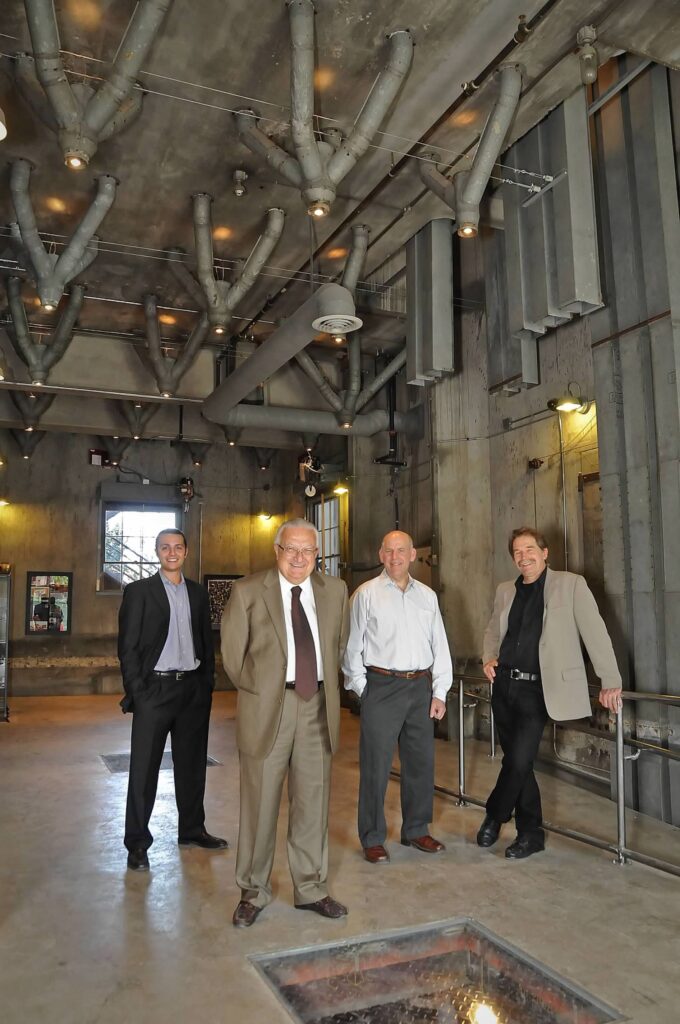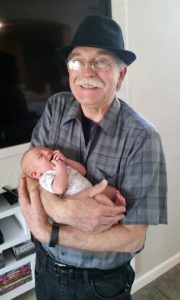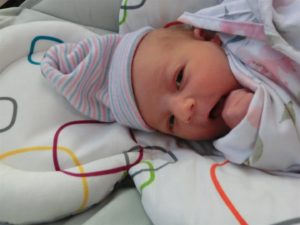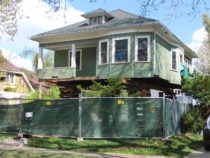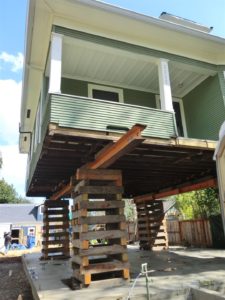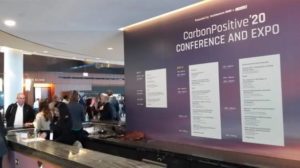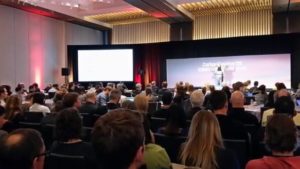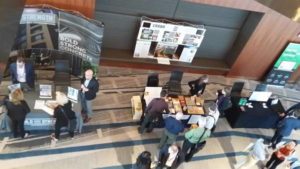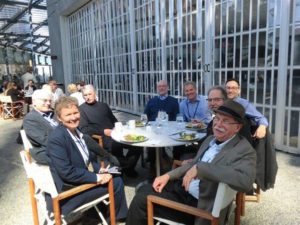CalGreen Embodied Carbon Mandatory Measures
Recently adopted changes to CalGreen include a variety of measures, and they are spread over various sections of CalGreen. It would be super helpful to have ALL the measures associated with Embodied Carbon Mandatory Measures and Voluntary Tiers in one place. To accomplish this requires getting the ‘express terms’ (ET in shorthand) from two sets of documents (the 45 day documents and the 15 day revisions); integrating them; and then ‘deleting’ all the ‘non embodied carbon’ material.
Once this is completed, the final document could be reformatted to make it easier to read. It needs to include the text EXACTLY as written, with no changes.
A document that accompanies the Express Terms is the Initial Statement of Reasons (ISOR in shorthand) – again, spread over many sections; pulling this all together in one place would be super helpful. The ISOR is the ‘rationale’ for the changes.
The helpful consolidation of these new code provisions will be occurring behind the scenes by the adopting state agencies and their partners in code publication, the International Code Council. Is it possible to create a detailed outline prior to this official action. The short answer is ‘yes’. The long answer is ‘It complicated’. Following is an outline of what this consolidation process would look like. In addition, once the new and changed provisions were consolidated and put into one place, there would need to be some ‘context added’ as some changes are part of an existing code change, and the overall meanings would not be fully clear unless some of that pre-existing material was brought along. In a nutshell, these measures are not simply under a ‘banner heading’ with everything in one place; instead, they are integrated into the existing structure of the CALGreen code, which required them to be placed in the appropriate locations.
Following is an outline of how the parts and pieces could be ‘put together’ prior to the official actions that will do this, to be published as ‘green sheets’ distributed by ICC to code holders, as updates. Other updates will also be included in those green sheets, as they are organized in the same way the code is, rather than by ‘overall topic’.
All the relevant material is one the CBSC website, under rulemaking
https://www.dgs.ca.gov/BSC/Rulemaking
Then click on ‘2022 intervening code cycle’
https://www.dgs.ca.gov/BSC/Rulemaking/2022-Intervening-Cycle
Then click on Green
https://www.dgs.ca.gov/BSC/Rulemaking/2022-Intervening-Cycle/2022-Public-Comments/GREEN-45
Then pick the state agency. Start with BSC
The document called ‘Commission Action Matrix – BSC 04/22 shows WHAT items are associated with WHAT Code change
Here are the ones releant to Embodied Carbon mandatory measures
Chapter 2, Section 202 – definitions (CALGreen carbon reduction related)
Chapter 5, NONRESIDENTIAL MANDATORY MEASURES, DIVISION 5.1- PLANNING AND DESIGN, SECTION 5.105 – DECONSTRUCTION AND REUSE OF EXISTING STRUCTURES
BSC proposes to adopt new sections into the 2022 CALGreen as listed below.
Chapter 5, NONRESIDENTIAL MANDATORY MEASURES, DIVISION 5.1- PLANNING AND DESIGN, SECTION 5.106 – SITE DEVELOPMENT
BSC proposes to adopt new and modify existing sections into the 2022 CALGreen as listed below.
Chapter 5, NONRESIDENTIAL MANDATORY MEASURES, DIVISION 5.1- PLANNING AND DESIGN, SECTION 5.106 – SITE DEVELOPMENT
BSC proposes to adopt new sections into the 2022 CALGreen as listed below.
Chapter 5, NONRESIDENTIAL MANDATORY MEASURES, DIVISION 5.1- PLANNING AND DESIGN, SECTION 5.106 – SITE DEVELOPMENT
BSC proposes to adopt new and modify existing sections into the 2022 CALGreen as listed below.
Chapter 5, NONRESIDENTIAL MANDATORY MEASURES, DIVISION 5.4 – MATERIAL CONSERVATION AND RESOURCE EFFICIENCY, SECTION 5.401
BSC proposes to modify existing section in the 2022 CALGreen as listed below.
Chapter 5, NONRESIDENTIAL MANDATORY MEASURES, DIVISION 5.4 – MATERIAL CONSERVATION AND RESOURCE EFFICIENCY, SECTION 5.402 – DEFINITIONS
BSC proposes to add new terms to this section in the 2022 CALGreen as listed below.
Chapter 5, NONRESIDENTIAL MANDATORY MEASURES, DIVISION 5.4 – MATERIAL CONSERVATION AND RESOURCE EFFICIENCY, SECTION 5.408 – CONSTRUCTION WASTE REDUCTION, DISPOSAL AND RECYCLING
BSC proposes to modify existing section in the 2022 CALGreen as listed below.
Chapter 5, NONRESIDENTIAL MANDATORY MEASURES, DIVISION 5.4 – MATERIAL CONSERVATION AND RESOURCE EFFICIENCY, SECTION 5.409 LIFE CYCLE ASSESSMENT
BSC proposes to adopt new sections into the 2022 CALGreen as listed below.
Chapter 5, NONRESIDENTIAL MANDATORY MEASURES, DIVISION 5.4 – MATERIAL CONSERVATION AND RESOURCE EFFICIENCY, SECTION 5.409 LIFE CYCLE ASSESSMENT
BSC proposes to adopt new sections into the 2022 CALGreen as listed below.
Chapter 5, NONRESIDENTIAL MANDATORY MEASURES, DIVISION 5.4 – MATERIAL CONSERVATION AND RESOURCE EFFICIENCY, SECTION 5.410 BUILDING MAINTANANCE AND OPERATION
BSC proposes to modify section listed below in the 2022 CALGreen as listed below.
Chapter 6, REFERENCED ORGANIZATIONS AND STANDARDS, AND MATERIALS, SECTION 601.1 GENERAL
BSC proposes to add new referenced standards and organizations to the 2022 CALGreen as listed below.
Chapter 6, REFERENCED ORGANIZATIONS AND STANDARDS, AND MATERIALS, SECTION 601.1 GENERAL
BSC proposes to add new referenced standards and organizations to the 2022 CALGreen as listed below.
Appendix A5, NONRESIDENTIAL VOLUNTARY MEASURES, DIVISION A5.1- PLANNING AND DESIGN, SECTION A5.105 DECONSTRUCTION AND REUSE OF EXISTING STRUCTURES
BSC proposes to repeal existing language and replace with new text in the 2022 CALGreen as listed below.
Appendix A5, NONRESIDENTIAL VOLUNTARY MEASURES, DIVISION A5.1 – PLANNING AND DESIGN, SECTION A5.106 SITE DEVELOPMENT
BSC proposes to modify existing sections and add new sections to the 2022 CALGreen as listed below.
Appendix A5, NONRESIDENTIAL VOLUNTARY MEASURES, DIVISION A5.1 – PLANNING AND DESIGN, SECTION A5.106 SITE DEVELOPMENT
BSC proposes to modify existing sections and add new sections/tables to the 2022 CALGreen as listed below.
Appendix A5, NONRESIDENTIAL VOLUNTARY MEASURES, DIVISION A5.1 – PLANNING AND DESIGN, SECTION A5.106 SITE DEVELOPMENT
BSC proposes to add new and modify existing sections in the 2022 CALGreen as listed below.
Appendix A5, NONRESIDENTIAL VOLUNTARY MEASURES, DIVISION A5.1 – PLANNING AND DESIGN, SECTIONS A5.102 DEFINITIONS AND A5.107 BIRD-FRIENDLY BUILDING DESIGN
BSC proposes to add new sections into the 2022 CALGreen as listed below.
Appendix A5, NONRESIDENTIAL VOLUNTARY MEASURES, DIVISION A5.4- MATERIAL CONSERVATION AND RESOURCE EFFICIENCY, SECTION A5.401 GENERAl
BSC proposes to modify section in the 2022 CALGreen as listed below.
Appendix A5, NONRESIDENTIAL VOLUNTARY MEASURES, DIVISION A5.4- MATERIAL CONSERVATION AND RESOURCE EFFICIENCY, A5.402 DEFINITIONS
BSC proposes to add new definition terms to the 2022 CALGreen as listed below.
Appendix A5, NONRESIDENTIAL VOLUNTARY MEASURES, DIVISION A5.4- MATERIAL CONSERVATION AND RESOURCE EFFICIENCY, A5.405 MATERIAL SOURCES
BSC proposes to add new section to the 2022 CALGreen as listed below.
Appendix A5, NONRESIDENTIAL VOLUNTARY MEASURES, DIVISION A5.4- MATERIAL CONSERVATION AND RESOURCE EFFICIENCY, A5.405 MATERIAL SOURCES
BSC proposes to repeal and modify sections in the 2022 CALGreen as listed below.
Appendix A5, NONRESIDENTIAL VOLUNTARY MEASURES, DIVISION A5.4- MATERIAL CONSERVATION AND RESOURCE EFFICIENCY, A5.409 LIFE CYCLE ASSESSMENT
BSC proposes to repeal, add new, and modify existing sections into the 2022 CALGreen as listed below.
Appendix A5, NONRESIDENTIAL VOLUNTARY MEASURES, DIVISION A5.6, SECTION A5.601 CALGREEN TIER 1 AND TIER 2
BSC proposes to modify and add new sections to the 2022 CALGreen as listed below.
Appendix A5, NONRESIDENTIAL VOLUNTARY MEASURES, DIVISION A5.6, SECTION A5.602, VERIFICATION GUIDELINES, MANDAtorY MEASURES CHECKLISTS
BSC propose to adopt new checklists tables upon final proposed code updates as listed below.
Each of the above headings are followed with a list of items which are applicable, some of them are long sub lists. EVERY ONE of the above are part of the Embodied Carbon Provisions that were adopted.
You will find the ‘detailed text’ for the many many items above in two areas 45 day and 15 day. The 15 day ‘revisions’ supercede the 45 day sections; but the 45 day elements that were NOT revised by 15 day provisions remain as set forth in the 45 day section. Easiest is to start with ALL the 45 day material, and then replace any material that was changed for the 15 day period.:
Then pick 45 and 15 day comment periods
The materials are in two places: one for the code changes adopted by CBSC (these are the ones that apply to commercial buildings of all types) and likely will be of greatest interest)
There was a SEPARATE code adoption process, and documents, for the DSA approval; these requirements ONLY apply to certain public schools. These would be of interest to architects that work on public school projects, which tends to be a ‘specialty practice area’ so perhaps a slightly lower priority. These two sets of codes overlap a lot, but some wording is going to be different (there is a different area threshold which is the primary difference)
MFMalinowski FAIA 8/9/2023
CALGreen Change proposals are here
https://www.dgs.ca.gov/BSC/Rulemaking/2022-Intervening-Cycle/2022-Public-Comments/GREEN-45
CBSC Initial Action and 45 day comments
DSA Initial Action and 45 day comments
Subsequent Revisions (in response to 45 day comments) and 15 Day Comments
https://www.dgs.ca.gov/BSC/Rulemaking/2022-Intervening-Cycle/2022-Public-Comments/GREEN-15
Materials related to the CalGreen Carbon Reduction Collaborative (CCRC)
Item 2D (Embodied Carbon Measures) Draft Initial Express Terms from the CCRC Sept 8 2022 meeting
This material would be a helpful supplement to the ‘statement of reasons’ as these are graphic slides; but they are NOT updated to reflect the 15 day changes so some final editing may need to be done.
Item 2D (embodied carbon) Powerpoint slides from the CCRC Sept 8 2022 meeting
MFMalinowski FAIA v2 8/9/2023


